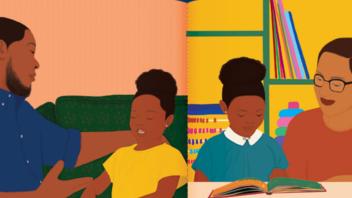Reading depends on spoken language. This is a simple statement with profound consequences for children whose spoken language differs from the language they are expected to read. For most children, the language skills they bring to school will support learning to read, which is mainly learning to understand their spoken language in a new form: print. However, some children’s language skills differ in important ways from the classroom language variety, and teachers rarely receive sound guidance on how to enhance their literacy instruction to meet these children’s needs.
Teaching reading to children whose language differs from the oral language of the classroom and from the linguistic structure of academic text adds an additional layer of complexity to reading instruction. There is a large and growing body of evidence indicating that language variation impacts reading, spelling, and writing in predictable ways. In particular, it has been demonstrated that mismatches between the language variety spoken by many African American children in their homes and communities and the written language variety encountered in books and other text can slow the development of reading and writing.
The focus of this article is the impact of one language variety, African American English (AAE), on literacy development and on teaching, assessing, and learning. Our goal is to describe aspects of instruction, curricula, and assessment that may create obstacles to literacy for African American children (compounding the effects of other factors, such as growing up in systemically under-resourced neighborhoods) and to share ways to modify instructional practices to benefit AAE speakers in significant ways.
Read full article, Teaching Reading to African American Children ›
Seidenberg, M.S., Washington, J.A. Teaching Reading to African American Children: When Home and School Language Differ. American Educator (Summer 2021).
